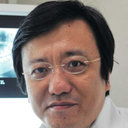Salivary gland hypofunction in KK-A y type 2 diabetic mice.
Parole chiave
Astratto
BACKGROUND
Hypofunction of different organs in the body is associated with diabetes, including in the oral cavity. Diabetes is often associated with xerostomia, but the underlying mechanism is not well characterized. Thus, the mechanisms underlying diabetes-induced xerostomia were investigated in this study in KK-A y mice as an experimental model of type 2 diabetes.
METHODS
The mechanisms involved in diabetes-induced xerostomia were investigated using the ex vivo glandular perfusion technique, histological analysis, and immunohistochemical and intracellular signaling analyses.
RESULTS
Ex vivo submandibular gland secretions from KK-Ay mice decreased by 30% following stimulation with 0.3 μmol/L carbachol (CCh), a cholinergic agonist. Acinar cell weight was comparable between KK-Ay and control mice, whereas duct cell weight was significantly greater in KK-Ay mice. Concentrations of Na+ and Cl- in the secreted saliva decreased significantly in KK-Ay mice, supporting the finding of increased ductal tissue in KK-Ay mice. Immunohistochemistry revealed no significant differences between KK-Ay and control mice in terms of the expression of Cl- and water channels, Na+ -K+ -2Cl- cotransporters, and membrane proteins critical for fluid secretion. Cellular signaling analysis revealed that the increase in [Ca2+ ]i in response to 0.3 μmol/L CCh was reduced by 30% in KK-Ay mice, although there was no significant difference in the thapsigargin (1.0 μmol/L)-induced increase in store-depleted calcium between KK-Ay and control mice.
CONCLUSIONS
These results demonstrate that submandibular fluid secretion is diminished in KK-Ay mice because of a diminished increase in [Ca2+ ]i . Duct cell weight increased in KK-Ay mice, possibly leading to increased ion reabsorption and thus decreased Na+ and Cl- concentrations in the secreted saliva.




